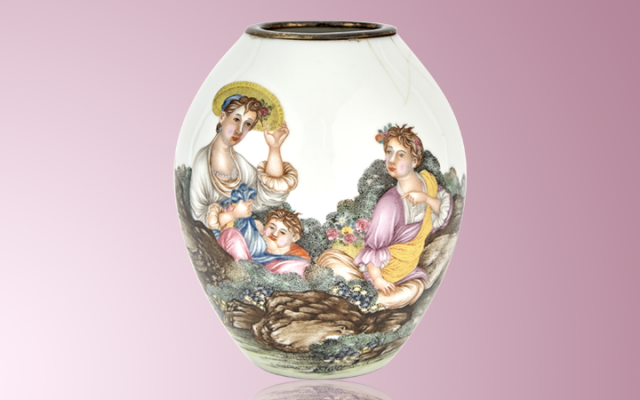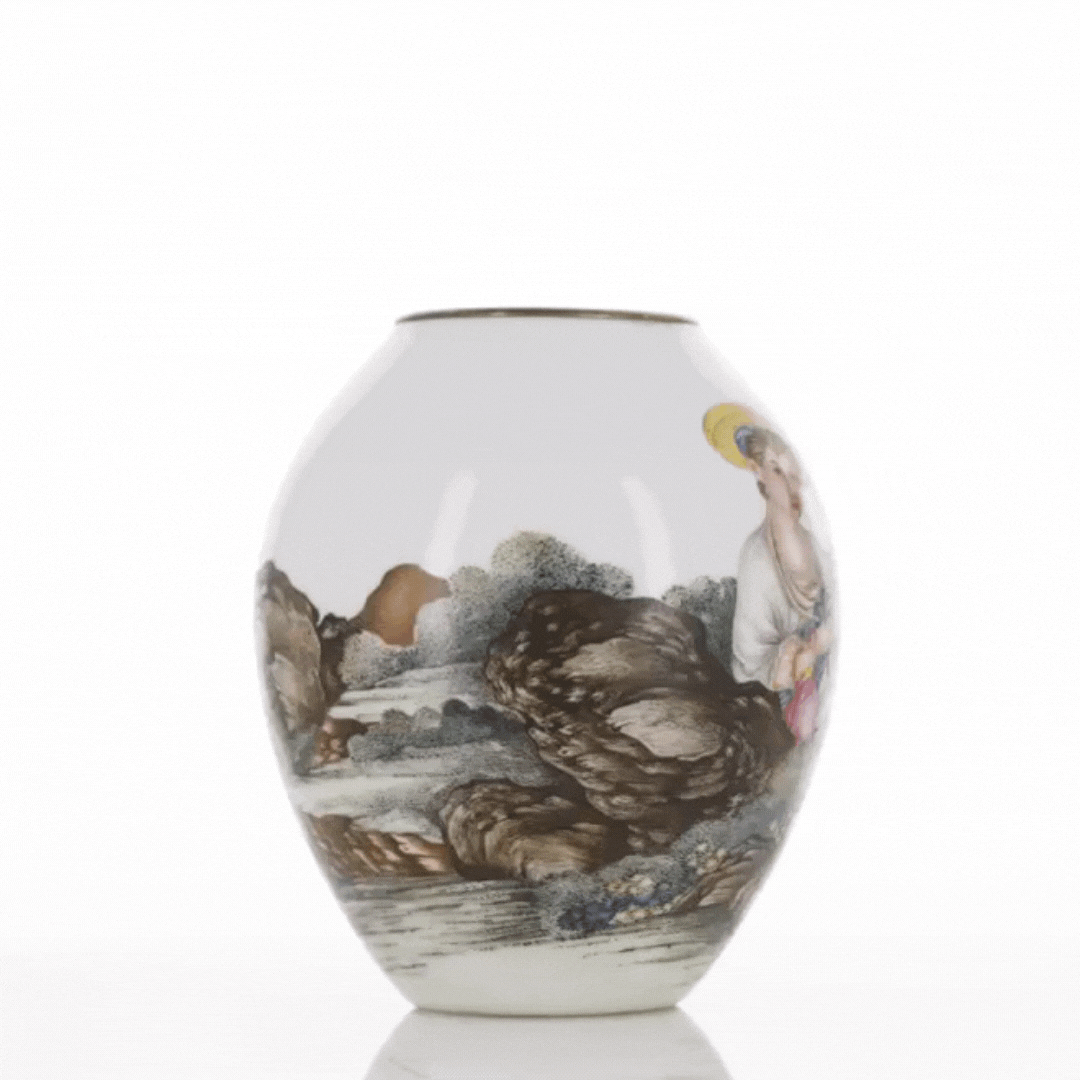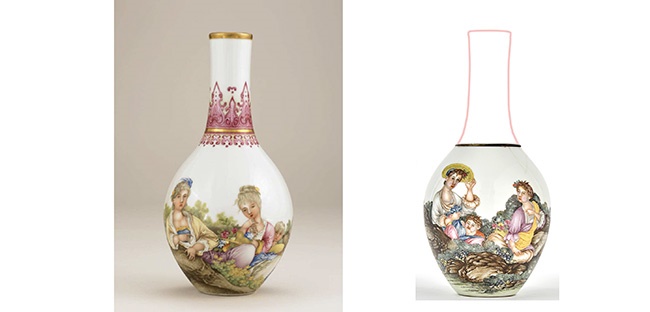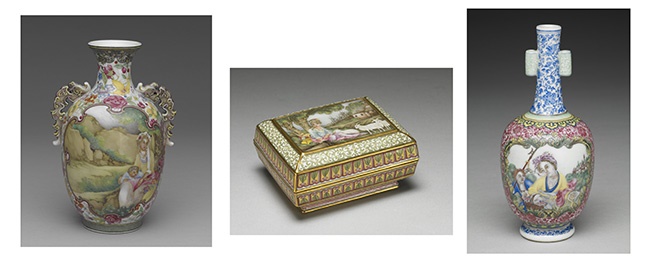The Sarah Belk Gambrell Falangcai Vase
09/16/2021 Asian Works of Art

 The Sarah Belk Gambrell Falangcai Vase
The Sarah Belk Gambrell Falangcai Vase
THE SARAH BELK GAMBRELL FALANGCAI VASE ACHIEVES $2.45 MILLION!
NEW YORK, NY -- The greatest testament to Sarah Belk Gambrell’s European porcelain connoisseurship was certainly her fine and valuable collection, auctioned at Doyle on June 24, 2021.
However, a larger picture of Mrs. Belk Gambrell’s life as a collector is revealed through her extensive notes and records, her fine research library and her well-documented associations with other notable collectors and museums. Mrs. Belk Gambrell was a porcelain scholar. As such, she acquired several non-European ceramics that would have been considered study pieces. These study examples, some of them in fragmentary form, trace back a history of porcelaneous and pre-porcelaneous ceramics from the fine Meissen and Du Paquier examples that highlighted the Belk Gambrell Collection to the kilns and workshops of Asia where the ceramics industry was developed. Most of these study pieces are of Chinese origin. One is a unique imperial masterpiece.
The Sarah Belk Gambrell Falangcai Vase bears a four-character mark in blue indicating its origin as a product of the Qianlong Emperor’s imperial workshop. Among the many artworks produced by the imperial workshop for use within the Forbidden City or to be given as gifts to those held in the Emperor’s esteem, though, falangcai (or “foreign colors”) wares are rarest. They hold the special distinction of having had to pass Qianlong’s own inspection. The enameling workshop that produced falangcai stood adjacent to the imperial residences so that the ruler could oversee and approve the masterpieces worthy of distribution. The techniques involved in creating, applying and firing the brilliant, jewel-like enamels were laborious. Relatively few falangcai wares were ever produced in the Qianlong Emperor's long reign (1735-1796). Of the small number of known extant examples, most are now held by major world museums.
The Qing imperial court’s interest in the production of European-influenced works of art originates with the Qianlong Emperor’s grandfather, The Kangxi Emperor. Kangxi invited European artists to join his court and to introduce western techniques into the production of Chinese paintings, works of art and even architecture. Most famous of these was the Italian Jesuit monk Giuseppe Castiglione, known at the court by his Chinese artist name Lang Shining. Castiglione’s tenure as a Chinese court artist lasted through the reign of Kangxi’s son, the Yongzheng Emperor, and into the Qianlong reign. By that latter period, European influence had not just subtly shaped the techniques employed in the creation of traditional Chinese works of art, but came to appear in the subject matter of some artistic genres.
A prototypical European-subject falangcai porcelain vase on display at the British Museum as part of the Sir Percival David Collection similarly displays two women in a pastoral setting with a young boy’s head and hands peeking from behind one of the two primary figures. This example has been identified as an early and likely experimental piece because of the unprecedented red seal mark and unusual decorative treatment at the neck. The Percival David Vase provides us the best and closest example from which to envision the proportion and possible design of the missing Sarah Belk Gambrell Vase’s neck.
 The Percival David Vase, British Museum / The Sarah Belk Gambrell Vase with outline of comparable neck
The Percival David Vase, British Museum / The Sarah Belk Gambrell Vase with outline of comparable neck
In terms of form and subject matter, the Sarah Belk Gambrell example compares quite closely to the vase in the British Museum. In terms of decoration, too, the theretofore “foreign” colors such as mauve and pale pink are identically controlled and shaded in the depiction of the ladies’ clothing. Note the basketweave texture created by layered enameling in the basket upon which the little boy leans in the David example and in the straw hat worn by the subject at left in the Sarah Belk Gambrell example.
In terms of portraiture, the Sarah Belk Gambrell vase seems to represent a transition between the highly detailed and uniquely fair visages found on the David example and those that may be seen on three European-subject falangcai porcelain items that are part of the National Palace Museum Collection, Taiwan.
 Three European-subject falangcai porcelains, National Palace Museum Collection, Taiwan
Three European-subject falangcai porcelains, National Palace Museum Collection, Taiwan
Here the complexions are rosier and the hair generally darker: a similar trend also found in 18th century European-subject falangcai enameled copper and glass wares. The three National Palace Museum falangcai porcelains above would seem to represent a latter period of production in which the porcelain body forms and surrounding decoration had become more elaborate – perhaps to the slight detriment of the painting-like quality of the primary scene.
Though the significance of the Sarah Belk Gambrell Vase in terms of its history, quality and value in today’s Chinese arts market makes it a singular highlight of her marvelous porcelain collection, it will never cease to be a study piece. It reveals in its subject matter the history of 17th and 18th century Qing court artistry. In its construction, one can begin to surmise the technical and conceptual skill required to create such a graceful scene in 360 degrees on a flawless olive-shaped porcelain body. Even its conspicuous loss invites us to envision the vase whole and in perfect proportion. How the neck was decorated – if at all – is the fair guess of any imagination.
My pleasure as a Specialist has been to care for, examine and admire the Sarah Belk Gambrell Falangcai Vase for this brief moment of its existence. The pleasure yet to come will be in sharing it with members of the public who attend the upcoming exhibition at Doyle and with collectors around the world who view the vase online.
The Sarah Belk Gambrell Falangcai Vase
ASIAN WORKS OF ART
Auction Monday, September 20, 2021 at 10am EDT
Exhibition Friday, September 17 - Monday, September 19, Noon - 5pm